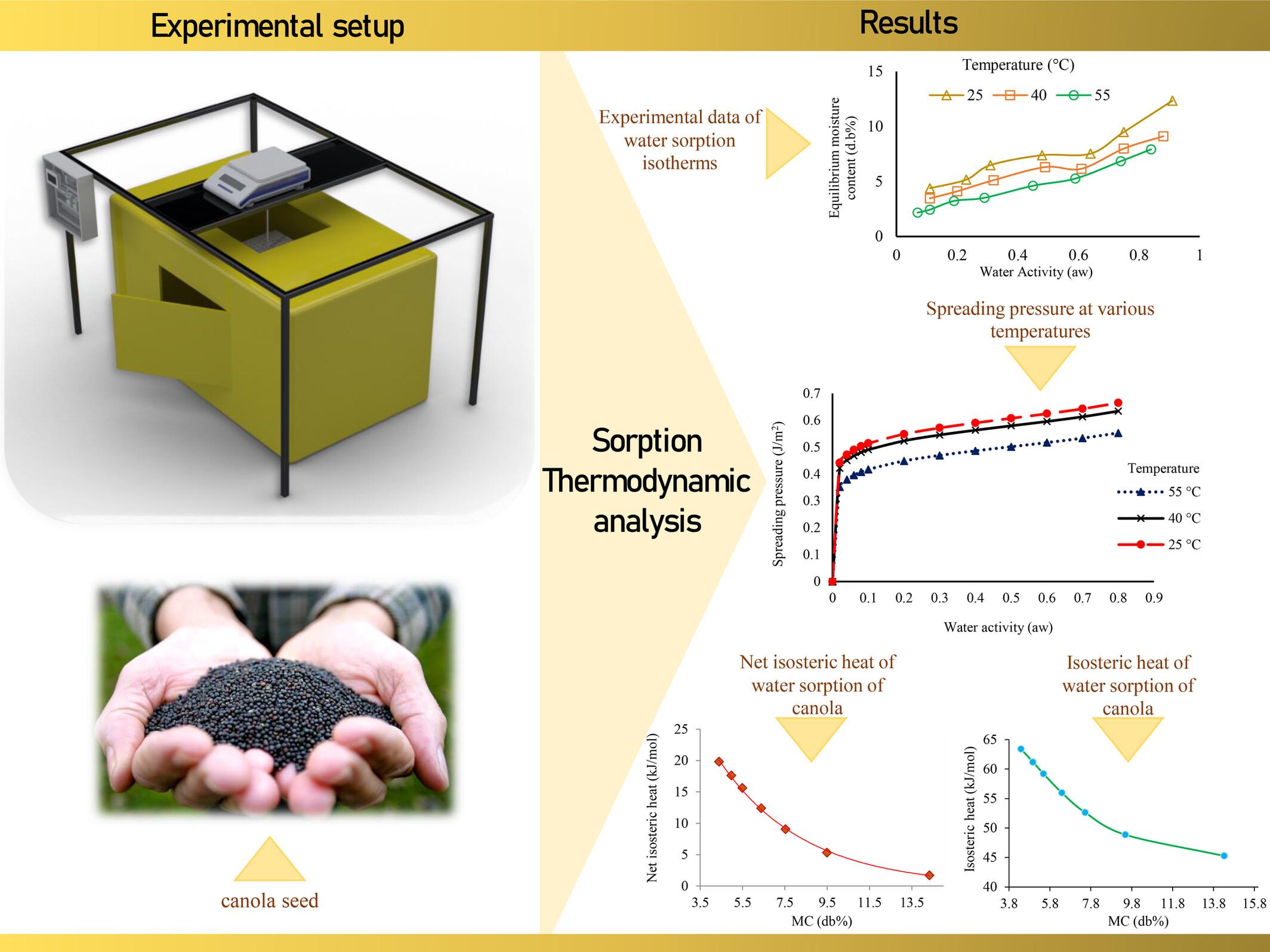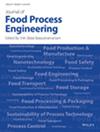Study of moisture sorption thermodynamic in canola oilseed and drying energy requirement considerations
Abstract
The objective of this study is to derive the thermodynamic characteristics from sorption isotherm data for canola. The semi-gravimetric method was utilized at three different temperatures (25, 40, and 55°C) and seven air relative humidity levels within the range of 11%–90%. The observed data indicated that the equilibrium moisture content of the sample decreased as the temperature increased. The “GAB and BET” models were applied to fit the empirical data, which demonstrated a Type III isotherm, and the monolayer water content was subsequently determined using these models. Thermodynamic properties such as “isosteric heat,” “net isosteric heat,” “differential entropy,” “net integral entropy,” and “net integral enthalpy” were determined from isothermal sorption curves. The results show that as moisture content increases, both the sorption isosteric heat and the differential entropy of sorption decrease. This indicates that at higher moisture levels, the energy required for additional moisture adsorption and the changes in entropy are reduced. Similarly, the net isosteric heat of sorption and the net integral enthalpy of sorption also decrease with increasing moisture content, consistent with the observed reductions in isosteric heat and differential entropy. The specific absorption surface area for each temperature was determined by calculating the monolayer moisture content using both the “GAB and BET models.” The net integral entropy had an increasing trend in the range of 4%–4.5% (db%), while it decreased in the range of 4.5%–6.8% of moisture content. In addition, the spreading pressure at three levels of temperature was reported. Finally, an empirical relation was employed to illustrate the cumulative energy requirement for drying versus moisture content. The results indicated that at low moisture content levels, the drying process required significantly higher energy.
Practical applications
Moisture sorption isotherms are essential for understanding the interaction between water and food ingredients. This knowledge is vital for improving food processing methods such as drying, mixing, cooling, and storage. In industry, isotherms can help determine the best drying method to maintain food quality, identify the optimal mixing conditions to ensure consistency, establish cooling protocols to prevent spoilage, and set storage guidelines to extend shelf life. In addition, understanding thermodynamic properties is crucial for regulating moisture absorption and release, achieving the desired food texture, managing surface characteristics, and calculating the energy needed for effective dehydration processes.


 求助内容:
求助内容: 应助结果提醒方式:
应助结果提醒方式:


